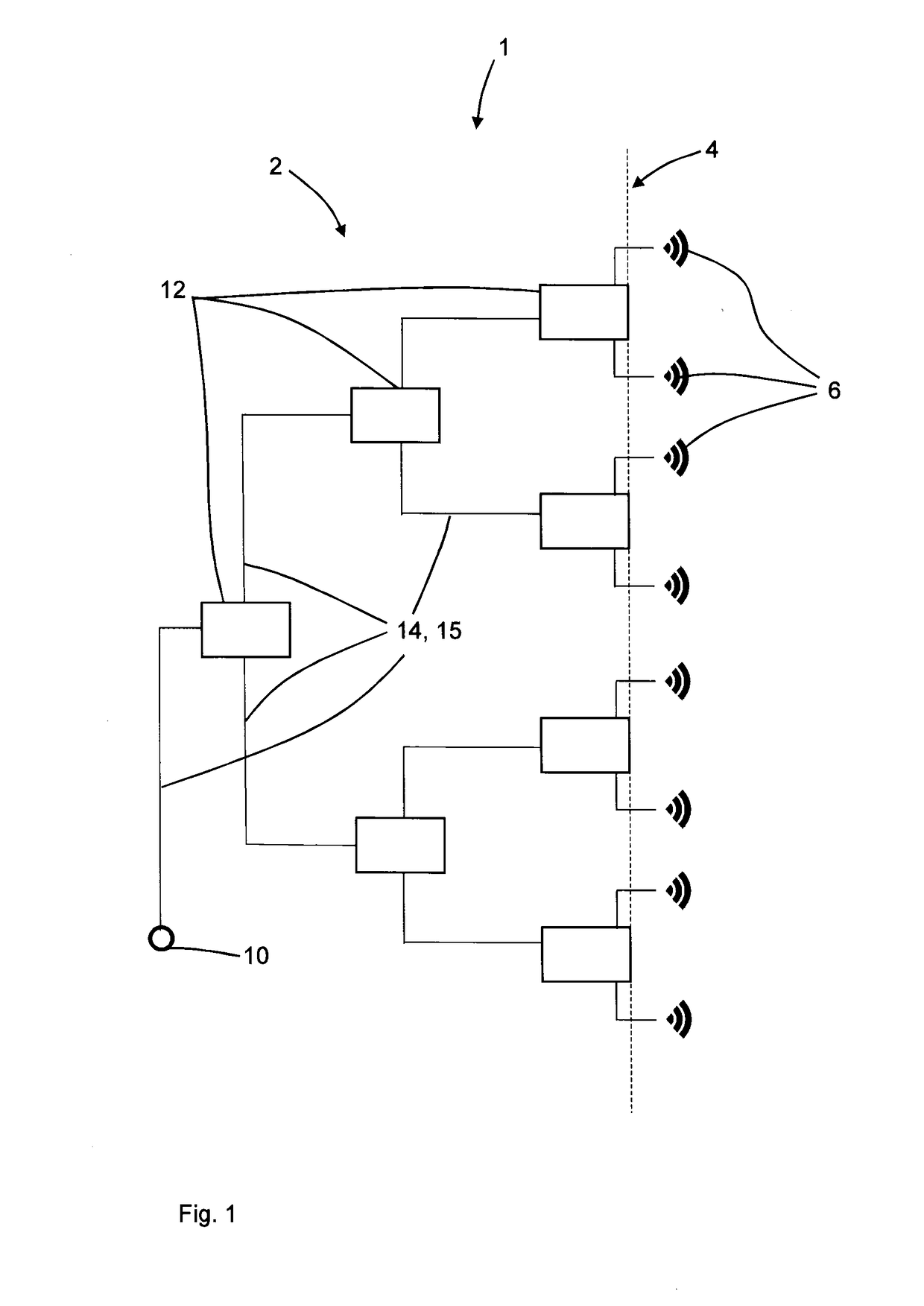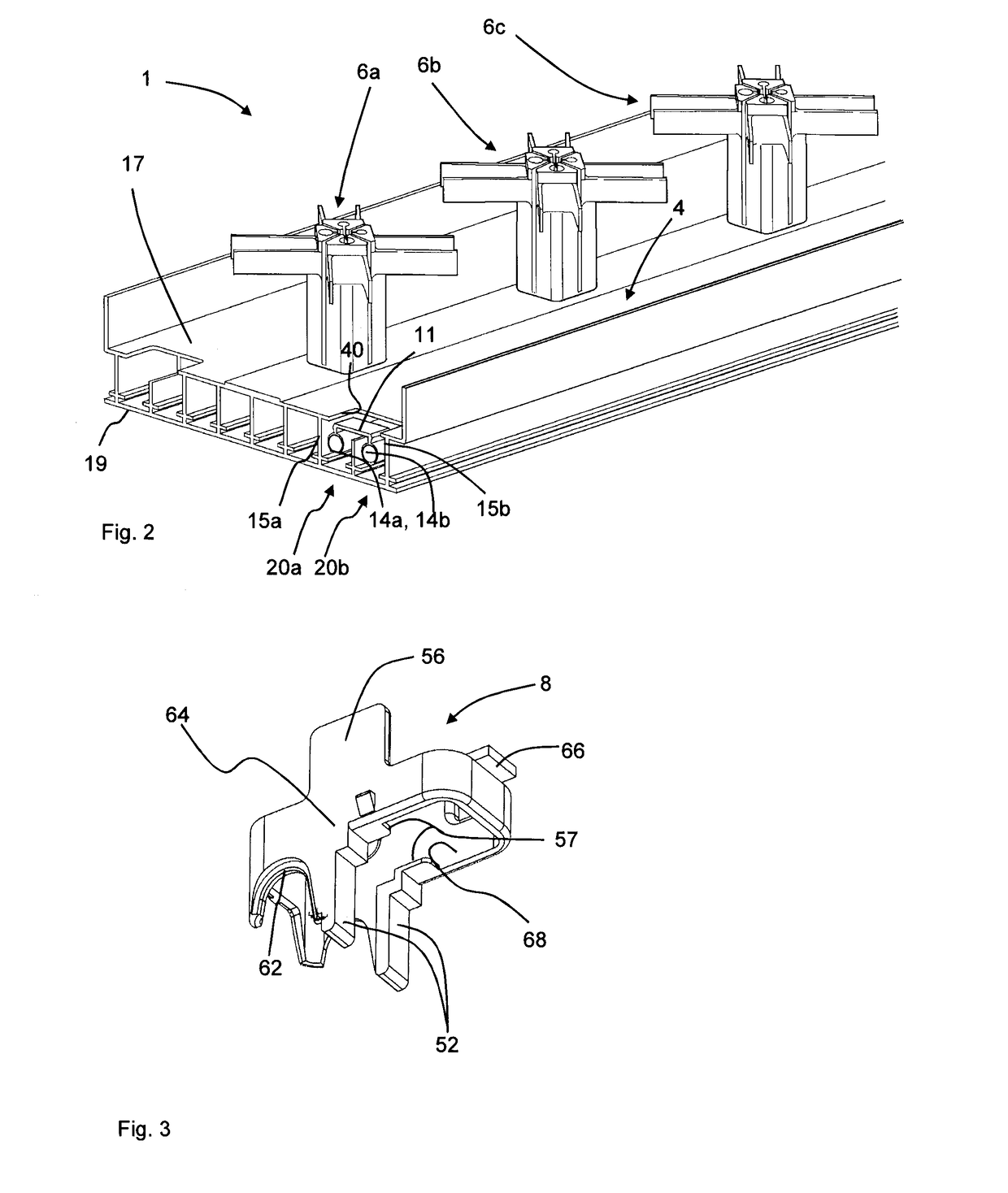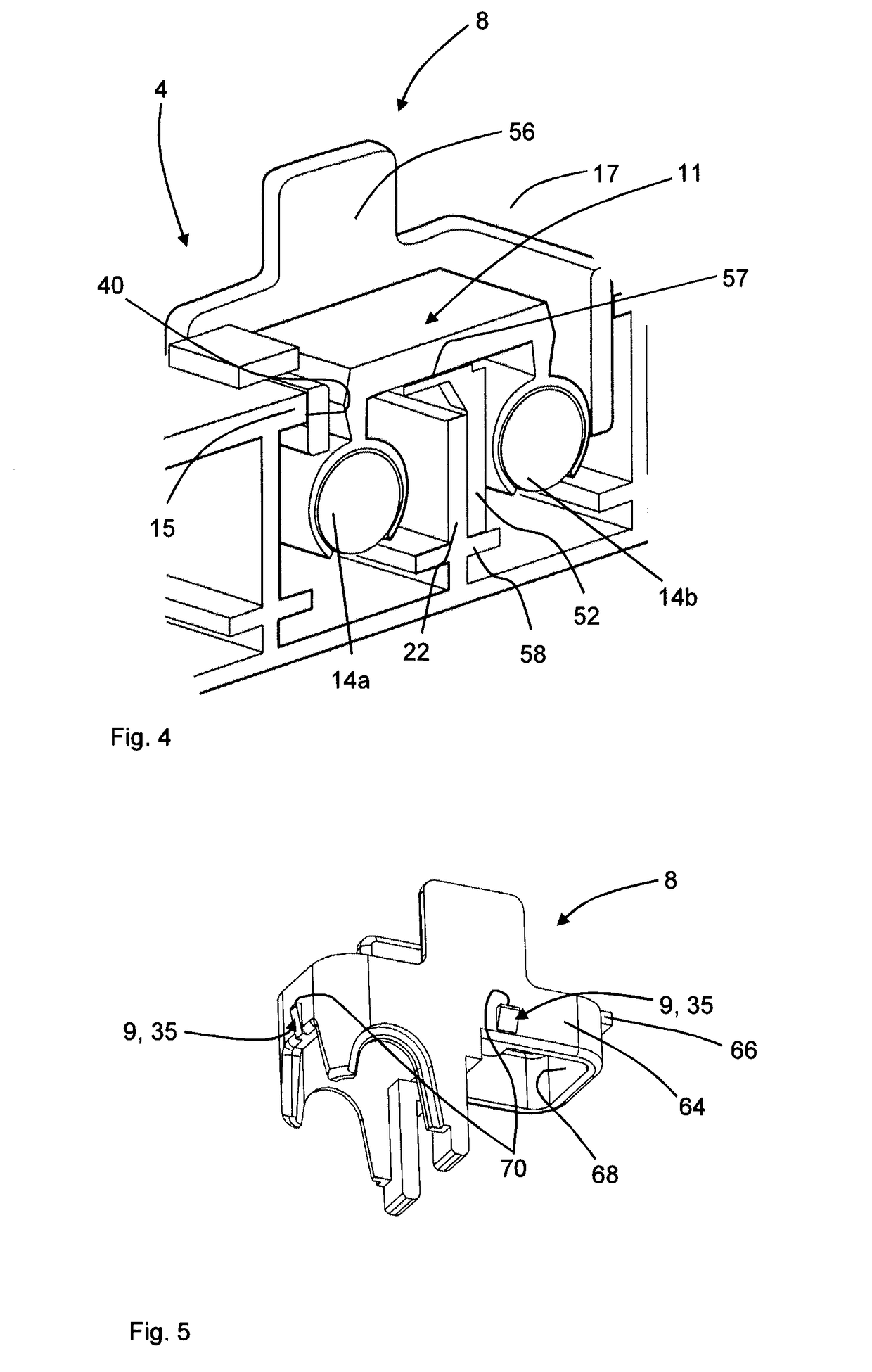Antenna feeding network comprising at least one holding element
- Summary
- Abstract
- Description
- Claims
- Application Information
AI Technical Summary
Benefits of technology
Problems solved by technology
Method used
Image
Examples
Embodiment Construction
[0039]FIG. 1 schematically illustrates an antenna arrangement 1 comprising an antenna feeding network 2, an electrically conductive reflector 4, which is shown schematically in FIG. 1, and a plurality of radiating elements 6. The radiating elements 6 may be dipoles.
[0040]The antenna feeding network 2 connects a coaxial connector 10 to the plurality of radiating elements 6 via a plurality of lines 14, 15, which may be coaxial lines, which are schematically illustrated in FIG. 1. The signal to / from the connector 10 is split / combined using, in this example, three stages of splitters / combiners 12.
[0041]Turning now to FIG. 2, which illustrates a multi-radiator antenna 1 in a perspective view, the antenna 1 comprises the electrically conductive reflector 4 and radiating elements 6a-c.
[0042]The electrically conductive reflector 4 comprises a front side 17, where the radiating elements 6a-c are mounted and a back side 19.
[0043]FIG. 2 shows a first coaxial line 20a which comprises a first c...
PUM
 Login to View More
Login to View More Abstract
Description
Claims
Application Information
 Login to View More
Login to View More - R&D
- Intellectual Property
- Life Sciences
- Materials
- Tech Scout
- Unparalleled Data Quality
- Higher Quality Content
- 60% Fewer Hallucinations
Browse by: Latest US Patents, China's latest patents, Technical Efficacy Thesaurus, Application Domain, Technology Topic, Popular Technical Reports.
© 2025 PatSnap. All rights reserved.Legal|Privacy policy|Modern Slavery Act Transparency Statement|Sitemap|About US| Contact US: help@patsnap.com



